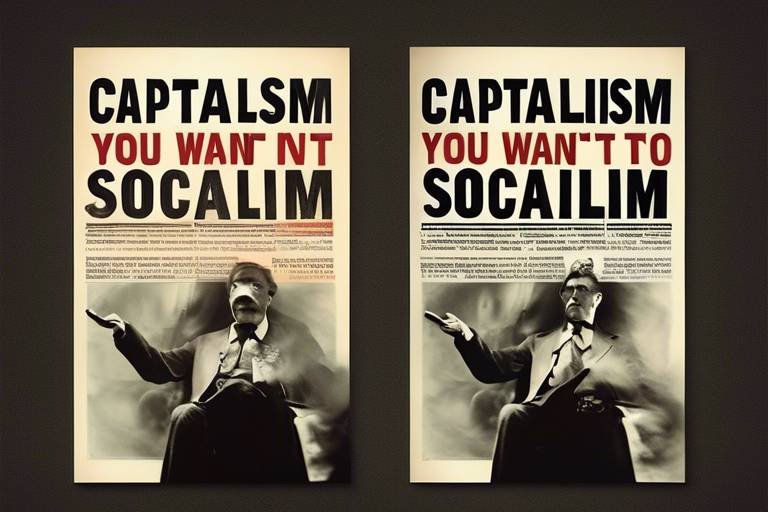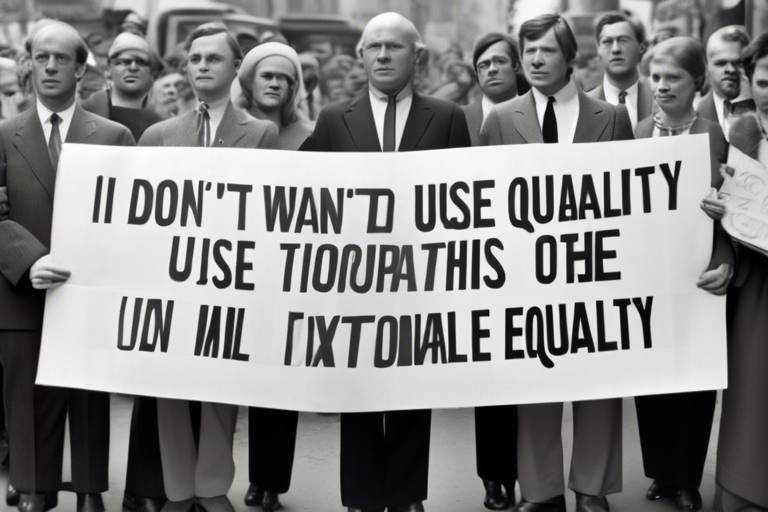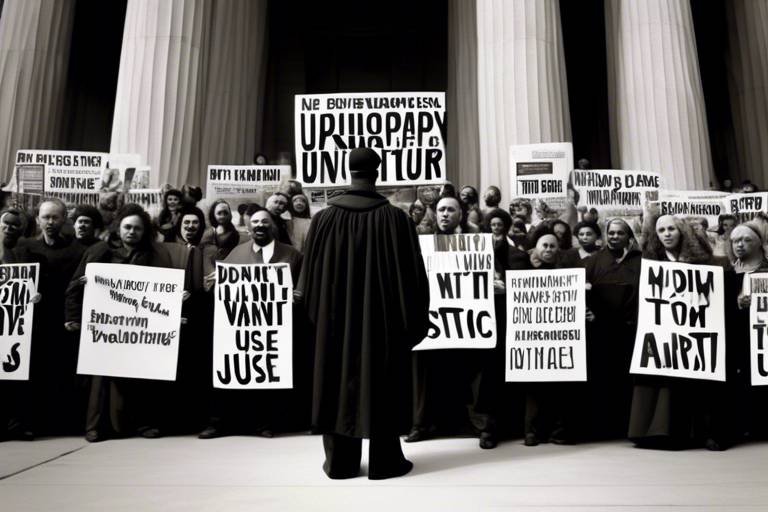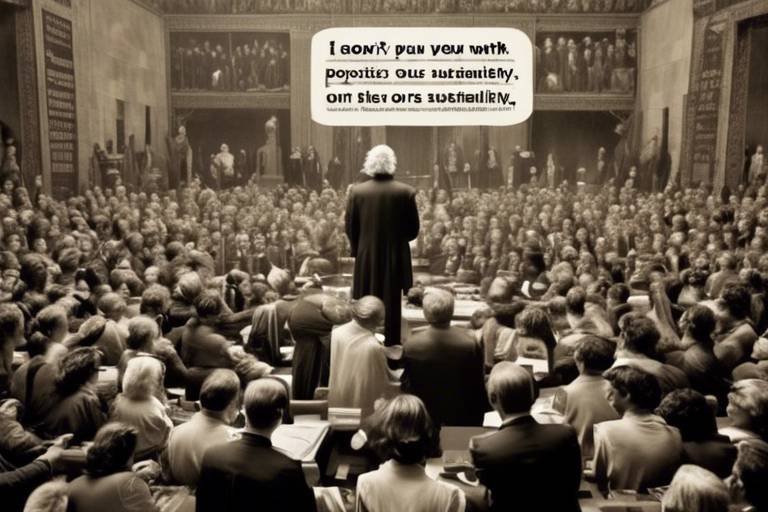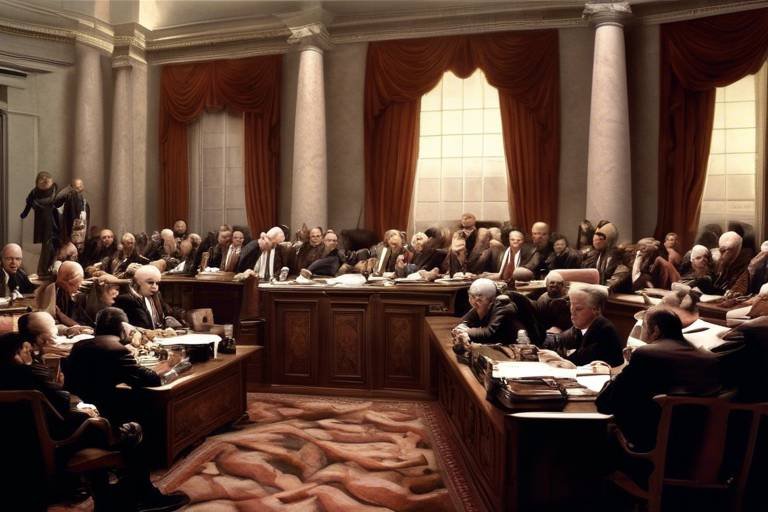The Philosophy of Marxism-Leninism and its Political Application
Marxism-Leninism is more than just a political doctrine; it’s a lens through which we can view the shifting landscapes of society, economics, and power. It emerged in the 20th century as a response to the injustices of capitalism, advocating for a revolutionary approach to achieve a classless society. At its core, this philosophy intertwines the ideas of Karl Marx and Vladimir Lenin, combining the critique of capitalism with the strategies for socialist revolution. In this article, we will dive deep into the foundational principles of Marxism-Leninism, its historical context, and its enduring influence on contemporary political movements around the globe.
To truly understand Marxism-Leninism, one must appreciate the historical backdrop against which it arose. The late 19th and early 20th centuries were characterized by rapid industrialization, urbanization, and stark social inequalities. The working class, or proletariat, faced harsh conditions, while a small elite, the bourgeoisie, amassed wealth and power. This environment fueled discontent and laid the groundwork for revolutionary ideas. The publication of the Communist Manifesto in 1848 by Marx and Friedrich Engels set the stage for a new political consciousness, but it was Lenin’s interpretation and application of these ideas that transformed them into a practical framework for action. The Russian Revolution of 1917 marked a pivotal moment, as it was the first successful attempt to implement Marxist principles on a national scale. Understanding this context enriches our grasp of how Marxism-Leninism sought to address the contradictions of capitalism and promote a new societal order.
At the heart of Marxism-Leninism are several key principles that guide its philosophy and political application. These principles include dialectical materialism, class struggle, and the emphasis on the role of the proletariat in achieving a socialist society. Each of these elements plays a crucial role in understanding how Marxism-Leninism seeks to transform society.
Dialectical materialism serves as the philosophical foundation of Marxism-Leninism. It emphasizes that material conditions and social relations shape human consciousness and societal development. In simpler terms, it posits that our reality is not just a product of ideas or beliefs but is fundamentally rooted in the material world. This perspective allows us to analyze how societal changes occur through the conflict of opposing forces, leading to progress and transformation.
One of the most compelling aspects of dialectical materialism is its focus on contradictions within society. Capitalism, for instance, is rife with contradictions—between wealth and poverty, labor and capital, freedom and oppression. These inherent conflicts are not just obstacles; they are the driving forces behind historical change. When we examine these contradictions, we can see how they catalyze revolutionary movements, pushing society toward a more equitable structure.
The relationship between material conditions and human consciousness is pivotal in Marxism-Leninism. It influences individuals' awareness of their social realities and their potential for revolutionary action. As people become more conscious of their exploitation within capitalist systems, they are more likely to mobilize for change. This consciousness-raising is essential for fostering solidarity among the proletariat and pushing for a collective movement toward socialism.
Class struggle is another central theme in Marxism-Leninism. It highlights the ongoing conflict between the bourgeoisie and the proletariat as a driving force in societal transformation. This struggle is not merely a historical footnote; it is an ever-present reality that shapes our world. The bourgeoisie, who own the means of production, seek to maintain their power and privilege, while the proletariat, who sell their labor, strive for liberation and equality. This dynamic conflict is what propels society toward socialism, as the oppressed rise against their oppressors.
When we look at the practical applications of Marxism-Leninism, we see a range of outcomes, from inspiring successes to sobering failures. The philosophy has been implemented in various countries, each adapting its core principles to local contexts. Understanding these case studies provides valuable insights into the complexities of applying Marxist-Leninist theory in real-world scenarios.
The Soviet Union is perhaps the most prominent example of Marxism-Leninism in action. Following the 1917 Revolution, the Bolsheviks, led by Lenin, sought to establish a socialist state based on Marxist principles. They achieved significant milestones, such as industrialization and the establishment of social welfare systems. However, the journey was fraught with challenges, including economic hardships, political repression, and eventual stagnation, leading to its dissolution in 1991. This complex history offers lessons on both the potential and pitfalls of implementing Marxism-Leninism.
Even today, Marxism-Leninism continues to influence political movements worldwide. From Latin America to Asia, various groups adapt its core principles to challenge capitalist structures and advocate for social justice. These contemporary applications demonstrate that while the context may change, the fundamental ideas of Marxism-Leninism remain relevant in the ongoing struggle for equality and liberation.
- What is the main difference between Marxism and Marxism-Leninism?
Marxism focuses on the theories of class struggle and historical materialism, while Marxism-Leninism incorporates Lenin's ideas on the role of the vanguard party and the necessity of a centralized approach to revolution.
- How did Marxism-Leninism influence global politics?
It inspired numerous revolutionary movements and governments, particularly in the 20th century, advocating for socialism and challenging imperialism and colonialism.
- Is Marxism-Leninism still relevant today?
Yes, many contemporary movements draw on its principles to address issues of inequality, exploitation, and social justice in today's capitalist societies.

Historical Context of Marxism-Leninism
The emergence of Marxism-Leninism cannot be understood without delving into the historical context that shaped its foundational ideas. The late 19th and early 20th centuries were rife with social upheaval, economic disparity, and political unrest, particularly in Europe. The Industrial Revolution had transformed economies, but it also led to the rise of a stark divide between the wealthy bourgeoisie and the impoverished proletariat. This growing inequality sparked a wave of discontent, with workers increasingly aware of their exploitation and yearning for change.
In this turbulent environment, Karl Marx and Friedrich Engels laid the groundwork for a revolutionary ideology that would inspire countless movements across the globe. Their seminal work, the Communist Manifesto, published in 1848, called for the working class to rise against their oppressors. Marx's analysis of capitalism as a system inherently fraught with contradictions resonated with those who felt trapped in a cycle of poverty and labor exploitation. The manifesto's famous rallying cry, "Workers of the world, unite!" became a beacon of hope for many.
Fast forward to the early 20th century, and the world was on the brink of monumental change. The Russian Revolution of 1917 marked a pivotal moment in history, as the Bolsheviks, led by Vladimir Lenin, seized power and established the first socialist state based on Marxist principles. This event was not merely a political revolution; it was a profound social transformation that aimed to dismantle the existing class structures and create a society governed by the proletariat. Lenin's adaptation of Marxism to the Russian context, often referred to as Marxism-Leninism, emphasized the need for a vanguard party to lead the revolution, a concept that would influence future socialist movements worldwide.
However, the historical context also presented significant challenges. The newly formed Soviet state faced internal strife, foreign intervention, and economic hardships. The Civil War (1917-1922) tested the resolve of the Bolshevik government, leading to the implementation of policies like War Communism and later the New Economic Policy (NEP) to stabilize the economy. These decisions reflected the ongoing struggle to balance revolutionary ideals with practical governance, a theme that would continue to echo through the history of Marxist-Leninist states.
As we analyze the historical context of Marxism-Leninism, it's essential to recognize that the ideology did not exist in a vacuum. It was a response to the specific conditions of its time, shaped by the struggles of the working class and the failures of capitalism. The legacy of Marxism-Leninism has continued to evolve, influencing various political movements and ideologies around the world, as leaders and activists sought to apply its principles to their unique circumstances.
To summarize, the historical context of Marxism-Leninism is characterized by:
- The rise of industrial capitalism and its social consequences.
- The influence of Marx and Engels' revolutionary ideas.
- The pivotal role of the Russian Revolution in establishing a socialist state.
- The ongoing challenges faced by Marxist-Leninist governments in practice.
Understanding this context is crucial for grasping how Marxism-Leninism has adapted and persisted as a political force throughout the 20th century and into the present day.
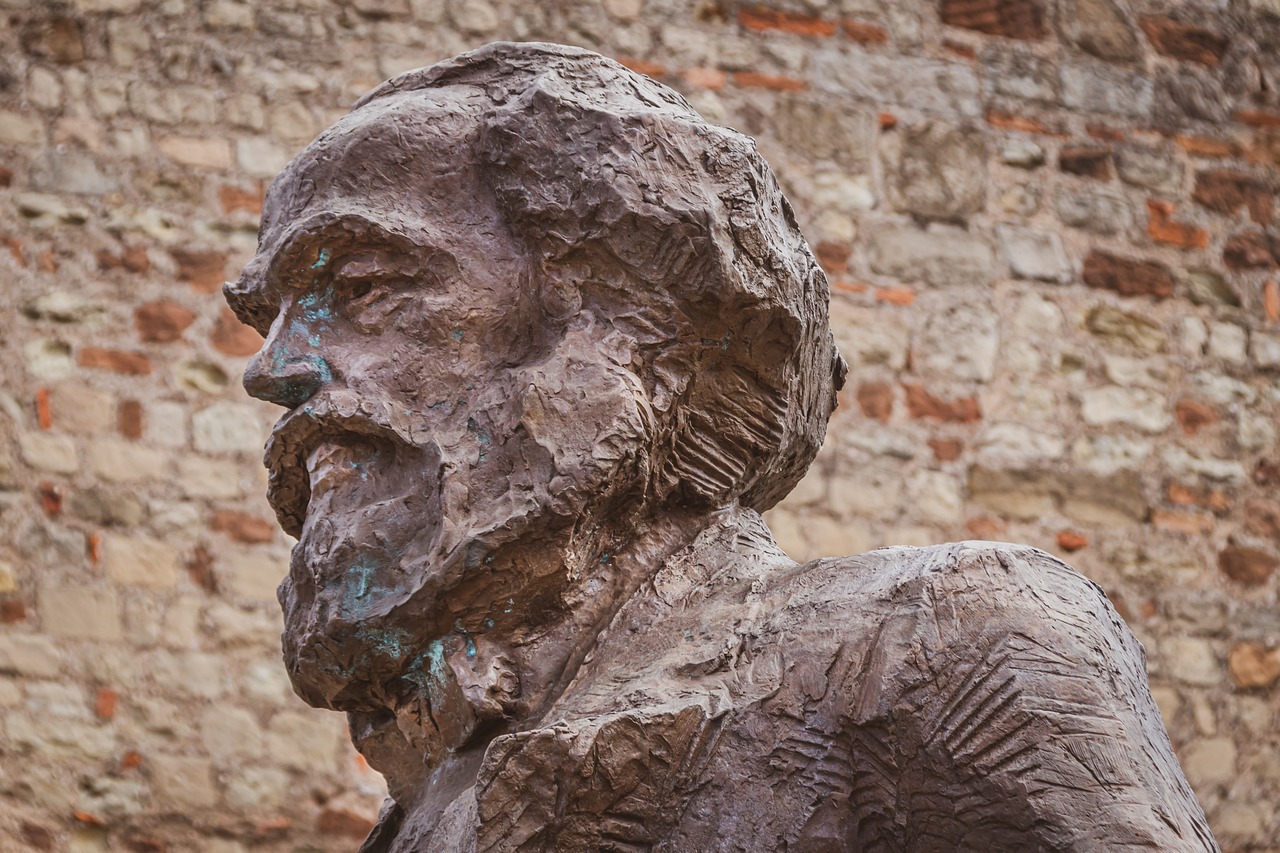
Key Principles of Marxism-Leninism
At its core, Marxism-Leninism is built upon a set of foundational principles that aim to guide the pursuit of a classless society. These principles are not merely theoretical; they are designed to be applied in real-world contexts to achieve tangible outcomes. Understanding these key tenets is essential for anyone looking to grasp the philosophy's implications on political movements and societal change.
One of the most significant principles is dialectical materialism, which posits that material conditions and social relations are the primary drivers of societal development. This philosophical approach emphasizes that human consciousness is shaped by the material world, challenging the notion that ideas alone can instigate change. For instance, consider how the industrial revolution transformed not just economies but also the very fabric of society, leading to new class dynamics and social struggles.
Dialectical materialism serves as the philosophical backbone of Marxism-Leninism. It highlights the importance of contradictions within society, particularly in capitalist systems. These contradictions, such as the disparity between the wealthy bourgeoisie and the struggling proletariat, are seen as catalysts for historical change. The idea is that as these contradictions intensify, they create a fertile ground for revolutionary movements. For example, the economic crises experienced in capitalist societies often lead to increased class consciousness among the working class, igniting a desire for change.
Examining the inherent contradictions within capitalist societies reveals how these conflicts drive historical change. The struggle between different classes, particularly between the bourgeoisie and the proletariat, is not just a backdrop; it is the engine of history. As these classes clash, they expose the flaws and limitations of the existing system, paving the way for revolutionary ideas to take root. This dynamic is akin to a pressure cooker—when the pressure builds sufficiently, it can lead to an explosive release of energy that transforms the entire landscape.
The relationship between material conditions and human consciousness is pivotal in Marxism-Leninism. It influences individuals' awareness of their social realities and their potential for revolutionary action. In this context, consciousness is not merely an individual experience but a collective one, shaped by shared struggles and aspirations. As people become more aware of their exploitation, they are more likely to unite and challenge the status quo.
Another central theme in Marxism-Leninism is the class struggle. This concept underscores the ongoing conflict between the bourgeoisie, who own the means of production, and the proletariat, who sell their labor. The class struggle is viewed as the driving force behind societal transformation and is essential for the pursuit of socialism. In Marxist theory, this struggle is not a mere historical footnote; it is a continuous process that shapes the future of society.
To illustrate this, consider the following table that summarizes the key aspects of class struggle:
| Class | Role | Goals |
|---|---|---|
| Bourgeoisie | Owners of production | Maintain power and profit |
| Proletariat | Workers | Achieve class consciousness and overthrow capitalism |
In summary, the key principles of Marxism-Leninism—dialectical materialism and class struggle—are not just theoretical constructs; they are practical tools aimed at understanding and transforming society. By analyzing the material conditions and the conflicts they generate, Marxism-Leninism provides a framework for revolutionary action. The goal is clear: to dismantle the capitalist structures that perpetuate inequality and to pave the way for a more just and equitable society.
- What is dialectical materialism? - It is the philosophical foundation of Marxism-Leninism that emphasizes the role of material conditions in shaping human consciousness.
- How does class struggle drive societal change? - The conflict between different classes, particularly the bourgeoisie and the proletariat, exposes the flaws of the existing system and can lead to revolutionary movements.
- Is Marxism-Leninism still relevant today? - Yes, many contemporary political movements continue to draw inspiration from its principles while adapting them to local contexts.
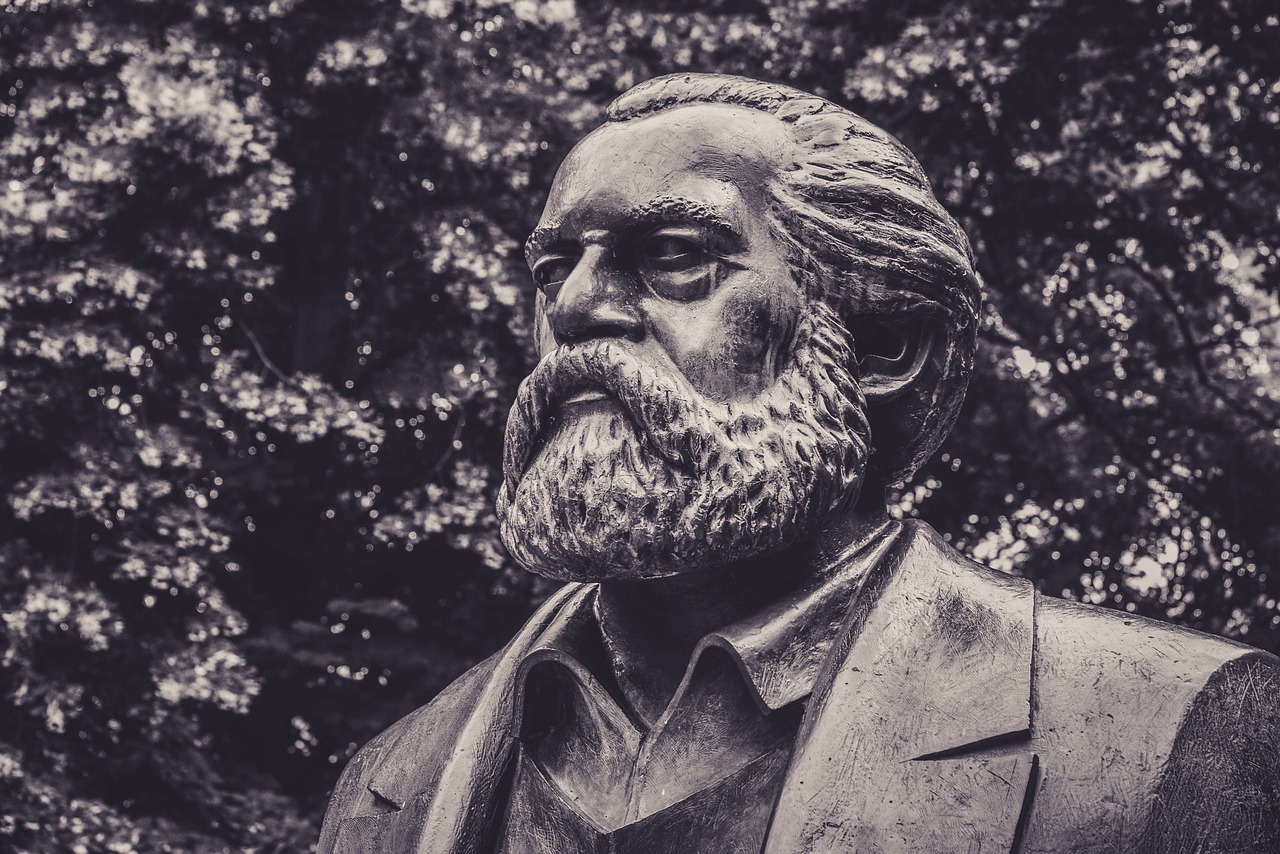
Dialectical Materialism
is more than just a philosophical framework; it is the very backbone of Marxism-Leninism. This concept emphasizes the significance of material conditions and social relations in the evolution of human consciousness and societal structures. Think of it as a lens through which we can examine the world, revealing how our environments shape our thoughts, beliefs, and actions. In simpler terms, it posits that our reality is not merely a product of ideas, but rather of the tangible circumstances we live in.
At its core, dialectical materialism operates on the principle that everything is in a constant state of flux. Just as a river flows and changes course, so too does society evolve. This evolution is driven by contradictions inherent within social systems. For example, in capitalist societies, the tension between the bourgeoisie (the ruling class) and the proletariat (the working class) creates a dynamic where change is not only possible but inevitable. This conflict is not merely a backdrop; it is the engine that fuels societal transformation.
Moreover, dialectical materialism posits that understanding these contradictions is crucial for anyone aiming to enact change. By recognizing the struggles and inequalities present in our world, individuals can gain insight into the mechanisms of power and oppression. This awareness is vital, as it forms the basis for revolutionary action. The role of consciousness, therefore, becomes pivotal. It is not enough to simply exist within a system; one must also be aware of it. As Marx famously stated, “The philosophers have only interpreted the world, in various ways. The point, however, is to change it.”
To illustrate the relationship between material conditions and consciousness, consider the following table:
| Material Conditions | Impact on Consciousness |
|---|---|
| Poverty | Heightened awareness of class struggle and social injustice |
| Access to Education | Increased ability to question societal norms and advocate for change |
| Employment Opportunities | Influences individuals' perspectives on economic systems and class dynamics |
In summary, dialectical materialism is not just a theoretical construct; it is a practical tool for understanding the world and driving change. By examining the contradictions within our societies and recognizing the influence of material conditions on our consciousness, we can better navigate the complexities of social struggles. This understanding empowers individuals and movements, allowing them to challenge existing power structures and work towards a more equitable society.
- What is dialectical materialism? - It is the philosophical foundation of Marxism-Leninism, focusing on the interplay between material conditions and human consciousness.
- How does dialectical materialism relate to class struggle? - It highlights the conflicts between different social classes as essential for understanding societal change.
- Can dialectical materialism be applied today? - Yes, it remains relevant in analyzing contemporary social and political issues.

Contradictions in Society
When we dive into the concept of contradictions in society, we uncover a fascinating tapestry of struggles and conflicts that shape our world. At the heart of Marxism-Leninism lies the understanding that societal contradictions are not merely incidental; they are the driving forces of historical change. Think about it: every time you see a protest or a movement demanding justice, you're witnessing the manifestation of these contradictions. For instance, the disparity between the rich and the poor creates a tension that can no longer be ignored. This tension is not just a nuisance; it’s a catalyst for transformation, pushing society toward revolutionary change.
These contradictions can be categorized into various forms, but let's highlight a few key areas:
- Economic Inequality: The widening gap between the bourgeoisie, who control wealth and resources, and the proletariat, who labor for survival, illustrates a fundamental contradiction in capitalist societies.
- Social Injustice: Discriminatory practices based on race, gender, or class create societal fractures that demand attention and resolution.
- Environmental Degradation: The relentless pursuit of profit often leads to environmental destruction, creating a conflict between economic growth and the sustainability of our planet.
These contradictions are not static; they evolve over time, often leading to heightened awareness and mobilization among the oppressed. For instance, the rise of social movements advocating for climate justice exemplifies how environmental concerns intersect with economic inequalities. Activists argue that the fight against climate change cannot be separated from the struggle against capitalism, as the latter is often responsible for the former.
Moreover, the contradictions within society also influence individual consciousness. As people experience the harsh realities of their existence, they begin to question the status quo. This awakening is crucial for fostering a revolutionary mindset. When individuals recognize the systemic injustices they face, they are more likely to engage in collective action aimed at dismantling oppressive structures. In this way, contradictions in society serve as both a mirror and a map, reflecting the current state of affairs while also guiding us toward potential avenues for change.
In summary, the contradictions inherent in capitalist societies are not merely obstacles to be overcome; they are vital components of the revolutionary process. By understanding and addressing these contradictions, we can pave the way for a more equitable and just society. As we reflect on these dynamics, it becomes clear that the struggle for social change is not only necessary but inevitable.
- What is the main idea behind contradictions in society? The main idea is that societal contradictions, such as economic inequality and social injustice, drive historical change and can lead to revolutionary movements.
- How do contradictions influence individual consciousness? They awaken individuals to the systemic injustices they face, encouraging them to engage in collective action for change.
- Can you provide an example of a societal contradiction? Yes, the disparity between the wealthy and the working class is a prime example, highlighting economic inequality as a source of tension.
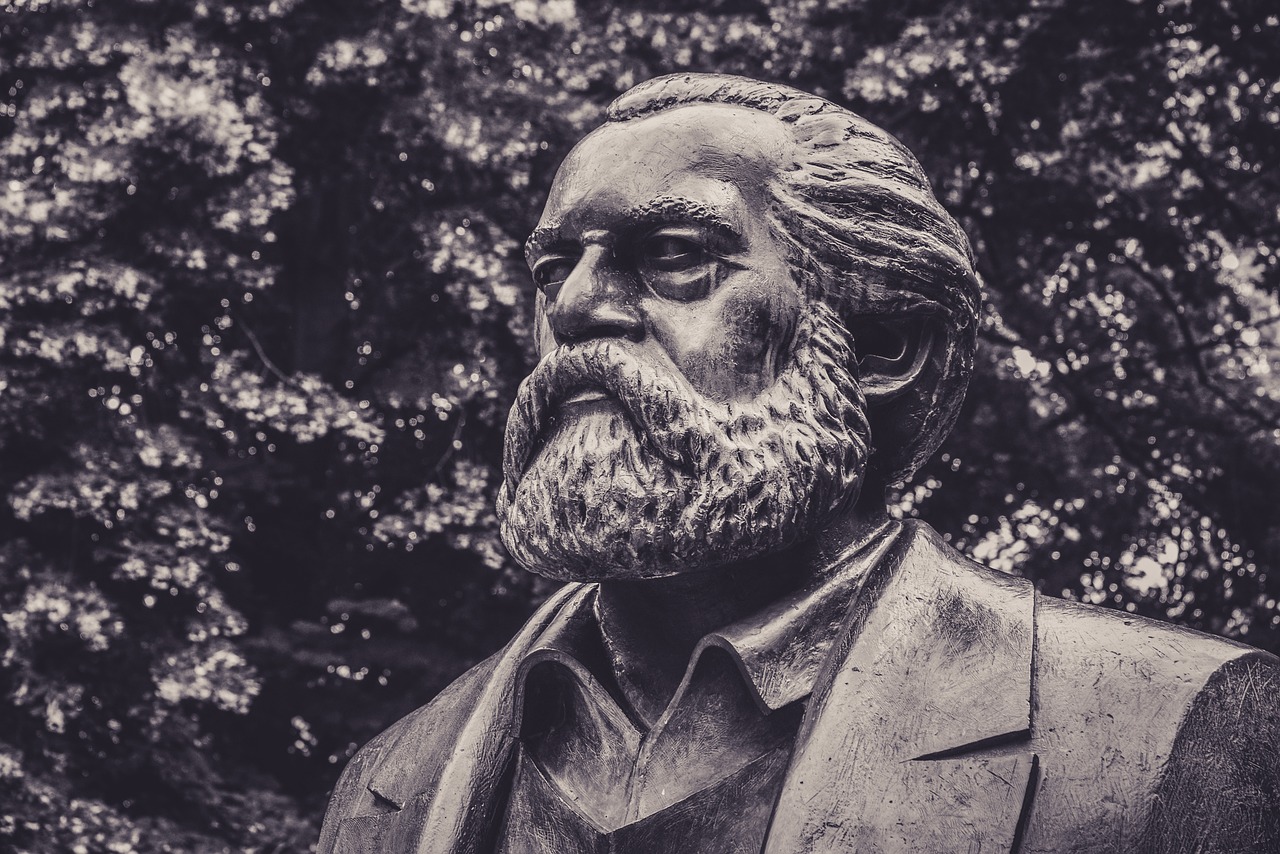
Role of Consciousness
The in Marxism-Leninism is not just a philosophical footnote; it is a vital component that shapes the way individuals perceive their reality and, consequently, their capacity for action. To put it simply, consciousness is like the lens through which people view the world around them. Imagine putting on a pair of glasses that filter out certain colors; what you see is altered, and this affects how you interact with everything around you. In a similar way, our consciousness—shaped by material conditions—affects our understanding of social structures and our potential for revolutionary change.
At the core of this concept lies the idea that material conditions, such as economic status and social relations, directly influence human awareness. For instance, a worker who struggles to make ends meet may develop a different outlook on life compared to a wealthy business owner. This disparity in understanding can create a divide in consciousness, leading to different responses to social injustices. The worker may become more aware of their exploitation, igniting a desire for change, while the business owner may remain oblivious to these struggles, prioritizing profit over people.
Furthermore, consciousness is not static; it evolves as individuals and groups engage with their environment. This dynamic nature of consciousness is crucial for fostering revolutionary potential. When people begin to recognize the contradictions in their society, they are more likely to mobilize for change. For example, during periods of economic crisis, the collective consciousness of the proletariat can shift dramatically, as shared experiences of hardship bring individuals together, fostering solidarity and a sense of shared purpose.
To illustrate this point, consider the following table that summarizes how consciousness shifts in response to different material conditions:
| Material Condition | Effect on Consciousness | Potential for Action |
|---|---|---|
| Economic Stability | Complacency and individualism | Low |
| Economic Crisis | Awareness of exploitation | High |
| Social Inequality | Recognition of class struggle | Very High |
In essence, the role of consciousness in Marxism-Leninism serves as a catalyst for change. It underscores the idea that awareness of one’s social reality is crucial for mobilizing the masses towards revolutionary action. When individuals recognize the systemic inequalities that govern their lives, they are more likely to unite and challenge the status quo. This collective awakening is what Marxism-Leninism aims to achieve, pushing individuals from mere awareness to active participation in the struggle for a more equitable society.
- What is the significance of consciousness in Marxism-Leninism?
Consciousness shapes how individuals perceive their social realities and influences their potential for revolutionary action. - How do material conditions affect consciousness?
Material conditions, such as economic status, directly influence individuals' awareness of their exploitation and social injustices. - Can consciousness change over time?
Yes, consciousness is dynamic and can evolve as individuals engage with their environment and experience collective struggles. - What role does class struggle play in shaping consciousness?
Class struggle highlights the conflicts between different social classes, fostering a greater awareness of systemic inequalities and the need for change.

Class Struggle
The concept of lies at the very heart of Marxism-Leninism, acting as a lens through which we can understand the dynamics of society. At its core, it encapsulates the ongoing conflict between different social classes, primarily the bourgeoisie—the owners of the means of production—and the proletariat, or the working class. This struggle is not merely a theoretical notion; it is a tangible force that shapes historical events and societal transformations. Have you ever noticed how the rich seem to get richer while the poor struggle to make ends meet? This disparity is not just a coincidence; it is a manifestation of class struggle in action.
Throughout history, class struggle has been the driving force behind revolutions, reforms, and societal changes. It is often said that history is written by the victors, but in the case of class struggle, it is the oppressed who have often risen up to challenge the status quo. The French Revolution, for example, was fueled by the anger and frustration of the common people against the aristocracy. Similarly, the Russian Revolution of 1917 was a direct response to the exploitation faced by the working class under the Tsarist regime. These events illustrate how class struggle can lead to significant political and social upheaval.
In the modern context, the class struggle has taken on new forms. Globalization, technological advancements, and economic policies have reshaped the landscape of labor and capital. Today, we see a resurgence of movements advocating for workers' rights, fair wages, and social justice. The Fight for $15 movement in the United States, which calls for a $15 minimum wage, is a prime example of contemporary class struggle. These movements often highlight the struggles of marginalized groups, emphasizing that class struggle is intertwined with issues of race, gender, and identity.
To understand class struggle fully, it's essential to recognize its various dimensions. It can manifest in multiple ways, such as:
- Economic Conflict: Disparities in wealth and income often lead to tensions between classes.
- Political Power: The struggle for representation and influence in government can be seen as a reflection of class interests.
- Cultural Struggles: Class differences can also be expressed through cultural norms, values, and ideologies, impacting social cohesion.
Furthermore, the role of consciousness in class struggle cannot be overlooked. Awareness of one’s class position and the injustices faced can spur individuals into action. This consciousness is often cultivated through education, social movements, and shared experiences among the working class. When people recognize their collective power, they can organize and mobilize to challenge the existing structures of oppression.
In conclusion, class struggle is not just a historical phenomenon; it is an ongoing reality that shapes our world today. As we navigate through the complexities of modern society, understanding the dynamics of class struggle can empower individuals and communities to advocate for change. Whether through grassroots movements or political activism, the fight for equality and justice continues to be a vital aspect of our social fabric.
- What is class struggle? Class struggle refers to the conflict between different classes in society, primarily between the bourgeoisie and the proletariat, over economic and political power.
- How does class struggle manifest today? It manifests through movements advocating for workers' rights, social justice, and economic equality, often highlighting issues of race and gender.
- Why is class struggle important? Understanding class struggle is crucial for recognizing the systemic inequalities in society and empowering individuals to advocate for change.

Marxism-Leninism in Practice
Marxism-Leninism, as a political ideology, has had a profound impact on the way nations have structured their governments and economies throughout the 20th and 21st centuries. Its implementation varies widely across different countries, reflecting unique historical, cultural, and social contexts. The core principles of Marxism-Leninism advocate for the establishment of a socialist state through the leadership of the proletariat, aiming to dismantle capitalist structures that perpetuate inequality. However, the journey from theory to practice is often fraught with challenges and contradictions.
One of the most notable examples of Marxism-Leninism in action is the Soviet Union, which serves as a case study illustrating both the successes and failures of this ideology. Following the October Revolution of 1917, the Bolsheviks, led by Vladimir Lenin, sought to create a classless society by nationalizing industry and redistributing land. The initial years were marked by significant achievements, such as the establishment of universal education and healthcare, which aimed to uplift the working class. However, the centralization of power also led to authoritarian practices that contradicted the very essence of proletarian democracy.
In examining the Soviet experience, it is essential to consider the challenges it faced, including economic inefficiencies, bureaucratic corruption, and a lack of political freedoms. These issues culminated in the eventual dissolution of the Soviet Union in 1991, prompting a reevaluation of Marxism-Leninism's applicability in contemporary contexts. The fall of the Soviet Union does not signify the end of Marxism-Leninism; rather, it highlights the need for adaptation and evolution of its principles to fit modern realities.
Today, Marxism-Leninism continues to inspire various political movements around the globe, albeit in forms that reflect local struggles and aspirations. For instance, in Latin America, leaders like Hugo Chávez in Venezuela and Evo Morales in Bolivia have drawn on Marxist-Leninist principles to challenge neoliberal policies and advocate for social justice. Their approaches underscore the importance of sovereignty and self-determination in the fight against imperialism and capitalist exploitation.
To further illustrate the diverse applications of Marxism-Leninism, consider the following table that contrasts different countries' experiences:
| Country | Implementation Period | Key Features | Outcomes |
|---|---|---|---|
| Soviet Union | 1917-1991 | Centralized economy, state control of resources | Initial industrial growth, followed by economic stagnation |
| Cuba | 1959-Present | Planned economy, universal healthcare and education | Resilient despite economic embargo, but facing challenges |
| China | 1949-Present | Market socialism, state capitalism | Rapid economic growth, but increasing inequality |
In conclusion, the practice of Marxism-Leninism is not a monolithic experience but rather a tapestry woven from various threads of history, culture, and ideology. As contemporary movements continue to engage with its principles, the challenge remains: how to uphold the ideals of socialism while navigating the complexities of modern governance and global capitalism?
- What is the main goal of Marxism-Leninism?
The primary aim is to establish a classless society through the leadership of the proletariat and the dismantling of capitalist structures. - How does Marxism-Leninism differ from traditional Marxism?
While traditional Marxism focuses on the analysis of class struggle, Marxism-Leninism emphasizes the role of a vanguard party to lead the revolution and establish a dictatorship of the proletariat. - Can Marxism-Leninism adapt to modern political contexts?
Yes, many contemporary movements have adapted its principles to address local issues, reflecting the evolving nature of the ideology.

Case Studies: Soviet Union
The Soviet Union stands as a pivotal case study in the application of Marxism-Leninism, showcasing a complex interplay of ideology, governance, and socio-economic transformation. Founded in the aftermath of the 1917 October Revolution, the Soviet state aimed to construct a society based on the principles laid out by Marx and Lenin. The early years were characterized by a fervent commitment to socialist ideals, but as we delve deeper, we find that the journey was fraught with both triumphs and tribulations.
Initially, the Soviet Union made significant strides in areas such as industrialization and education. The government prioritized the development of heavy industry, leading to rapid economic growth. For instance, the first Five-Year Plan, launched in 1928, aimed to transform the Soviet economy from agrarian to industrial. This ambitious initiative resulted in remarkable achievements, as evidenced by the following table:
| Year | Industrial Output Growth (%) | Key Achievements |
|---|---|---|
| 1928-1932 | 200% | Construction of new factories and infrastructure |
| 1933-1937 | 300% | Expansion of military production and heavy machinery |
However, this rapid industrialization came at a steep cost. The focus on heavy industry often led to the neglect of consumer goods, resulting in shortages and a decline in living standards for many citizens. Furthermore, the state employed repressive measures to maintain control, including forced collectivization of agriculture. This policy aimed to consolidate individual farms into large, state-controlled enterprises, but it met with fierce resistance and led to widespread famine, particularly in Ukraine during the Holodomor.
In addition to economic policies, the Soviet Union's political landscape was marked by a culture of totalitarianism. The Communist Party, under leaders like Joseph Stalin, suppressed dissent and centralized power. The Great Purge of the late 1930s exemplified this authoritarian approach, as millions were imprisoned or executed in a climate of fear. The state prioritized loyalty to the party over individual rights, creating a society where personal freedoms were severely restricted.
Despite these challenges, the Soviet Union played a crucial role in global politics, particularly during World War II. The Red Army's victory over Nazi Germany not only solidified the USSR's status as a superpower but also positioned it as a leader in the post-war socialist movement. The establishment of satellite states in Eastern Europe further extended the influence of Marxism-Leninism, demonstrating its adaptability to different contexts.
As we analyze the legacy of the Soviet Union, it's essential to recognize both its achievements and failures. The initial promise of a classless society was undermined by authoritarian practices and economic mismanagement. However, the Soviet experience continues to inform contemporary discussions on socialism, as various movements around the world draw lessons from its history. Today, the challenges faced by the Soviet Union serve as a reminder of the complexities involved in implementing ideological frameworks in real-world scenarios.
- What was the primary goal of the Soviet Union under Marxism-Leninism?
The primary goal was to establish a classless society through the abolition of private property and the implementation of state control over the means of production. - How did the Soviet Union's policies impact its economy?
The Soviet Union experienced rapid industrial growth but faced significant challenges, including shortages of consumer goods and agricultural failures due to forced collectivization. - What lessons can contemporary movements learn from the Soviet experience?
Contemporary movements can learn about the importance of balancing ideology with practical governance and the need to uphold individual rights while pursuing collective goals.
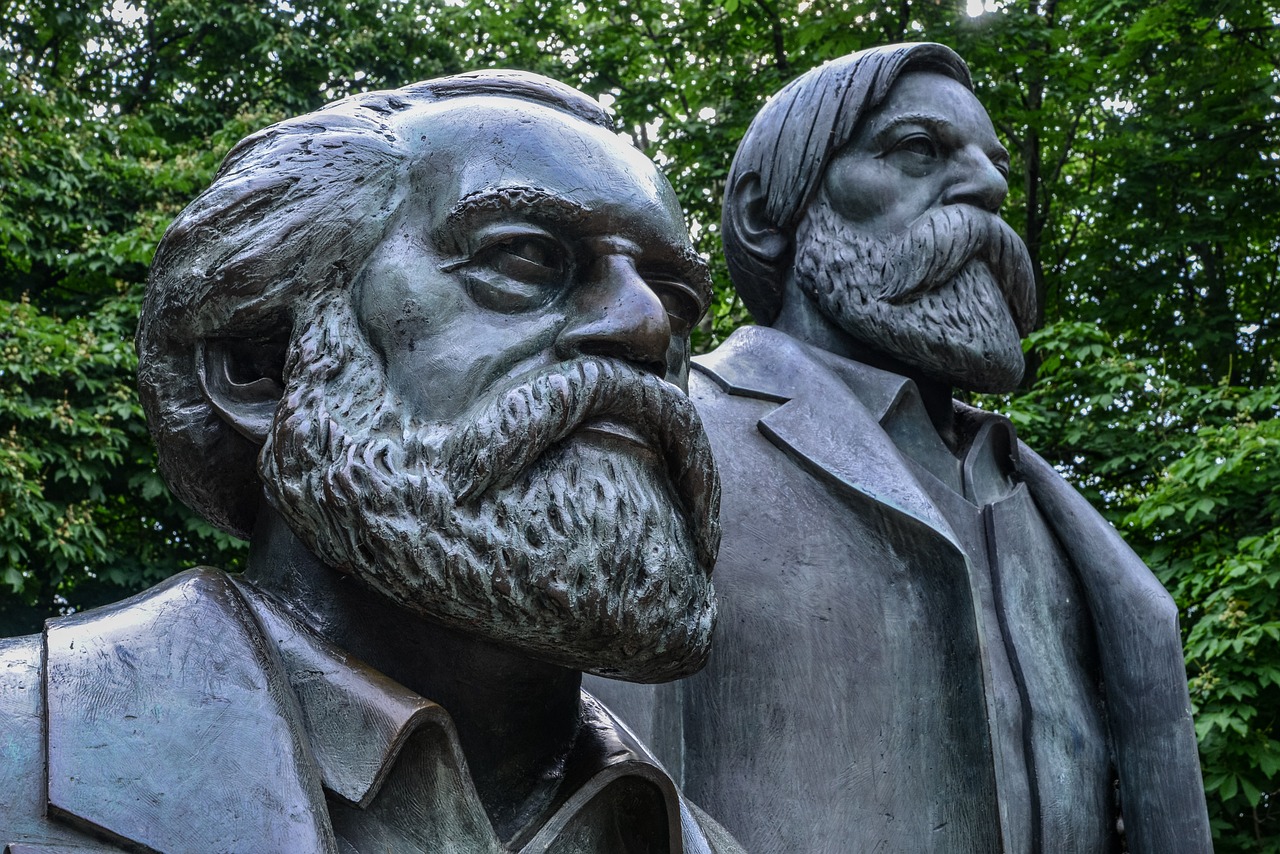
Contemporary Applications
In today's rapidly evolving political landscape, the principles of Marxism-Leninism continue to resonate with various movements around the globe. While the historical implementations of this ideology, particularly in the Soviet Union and China, have often been scrutinized, its core tenets still inspire many to challenge the status quo. From grassroots organizations to national political parties, the essence of Marxism-Leninism is being adapted to address modern issues such as inequality, environmental degradation, and social justice.
One of the most notable contemporary applications of Marxism-Leninism can be seen in Latin America. Countries like Venezuela and Cuba have embraced socialist policies that reflect Marxist-Leninist principles. These nations advocate for the redistribution of wealth and resources, aiming to empower the working class and marginalized communities. However, the outcomes have been mixed, leading to heated debates about the effectiveness of such policies in achieving true social equity. For instance, while Cuba has made significant strides in healthcare and education, its economic challenges raise questions about sustainability and adaptability in the face of global capitalism.
In Europe, various leftist movements are also reinterpreting Marxism-Leninism. The rise of far-left parties in countries like Greece and Spain showcases a renewed interest in socialist ideals, particularly in response to the austerity measures imposed during economic crises. These parties advocate for policies that prioritize workers' rights, public ownership of key industries, and a robust welfare state. They emphasize the importance of class struggle in their rhetoric, aiming to unite the working class against the perceived injustices of neoliberal policies.
Moreover, the recent global movements for racial and social justice have incorporated Marxist-Leninist thought, highlighting the intersectionality of class struggle with issues of race, gender, and environmentalism. Activists argue that capitalism exacerbates social inequalities and that a revolutionary approach is necessary to dismantle oppressive structures. For example, the Black Lives Matter movement has drawn on Marxist principles to articulate the systemic nature of racism and economic exploitation, advocating for a comprehensive overhaul of societal systems that perpetuate these injustices.
It is also essential to recognize the role of technology in contemporary applications of Marxism-Leninism. The rise of digital platforms has allowed for the rapid dissemination of socialist ideas and the organization of grassroots movements. Social media has become a powerful tool for mobilization, enabling activists to connect, share resources, and strategize collectively. This digital revolution has transformed traditional methods of political engagement, making it easier for like-minded individuals to unite around common goals.
However, the adaptation of Marxism-Leninism in the 21st century is not without its challenges. Critics argue that some contemporary movements may misinterpret or dilute the original principles, leading to a disconnection from the foundational ideas of class struggle and dialectical materialism. As these movements evolve, they must navigate the complexities of modern society while remaining true to the core values that define Marxism-Leninism.
In conclusion, the contemporary applications of Marxism-Leninism demonstrate its enduring relevance in addressing the pressing issues of our time. Whether through political parties, grassroots activism, or social movements, the ideology continues to inspire those seeking to create a more equitable and just world. As we move forward, it will be fascinating to observe how these principles evolve and adapt to meet the challenges of the future.
- What is Marxism-Leninism? - It is a political ideology based on the ideas of Karl Marx and Vladimir Lenin, emphasizing the role of the proletariat in overthrowing capitalism to establish a socialist state.
- How does Marxism-Leninism apply today? - It influences various political movements worldwide, advocating for social justice, workers' rights, and the redistribution of wealth.
- Are there successful examples of Marxism-Leninism? - Countries like Cuba and Venezuela have implemented Marxist-Leninist policies, with varying degrees of success and challenges.
- What challenges do contemporary Marxist movements face? - They often struggle with maintaining ideological purity while adapting to modern societal complexities and criticisms of past implementations.
Frequently Asked Questions
- What is Marxism-Leninism?
Marxism-Leninism is a political ideology that combines the ideas of Karl Marx and Vladimir Lenin. It emphasizes the importance of class struggle, the role of the proletariat, and the necessity of a revolutionary approach to achieve a socialist society. Essentially, it serves as a guide for political movements seeking to dismantle capitalist structures and establish a society based on collective ownership.
- How did historical context shape Marxism-Leninism?
The emergence of Marxism-Leninism was significantly influenced by the socio-economic conditions of the 19th and early 20th centuries. Industrialization, widespread poverty, and stark class divisions created an environment ripe for revolutionary ideas. Understanding these historical factors is crucial, as they highlight the necessity for a movement that could address the grievances of the working class and propose a new societal structure.
- What are the key principles of Marxism-Leninism?
The essential tenets of Marxism-Leninism include dialectical materialism, which focuses on the material conditions that shape society; class struggle, which emphasizes the conflict between different social classes; and the role of the proletariat in leading the revolution towards socialism. These principles work together to form a framework for understanding societal change and the path to achieving a more equitable society.
- Can you explain dialectical materialism?
Dialectical materialism is the philosophical foundation of Marxism-Leninism. It asserts that the material conditions of society—such as economic factors and social relations—are the primary influences on human consciousness and societal development. This concept encourages a dynamic understanding of history, where contradictions within society drive change and ultimately lead to revolutionary movements.
- What role does class struggle play in Marxism-Leninism?
Class struggle is a central theme in Marxism-Leninism, highlighting the ongoing conflict between the bourgeoisie (owners of the means of production) and the proletariat (working class). This struggle is seen as the engine of historical change, pushing society towards socialism. The idea is that as the proletariat becomes more aware of their exploitation, they will unite and rise against the capitalist system.
- How has Marxism-Leninism been implemented in practice?
Marxism-Leninism has been put into practice in various countries, most notably in the Soviet Union. The implementation has seen both successes, such as industrialization and improvements in literacy and healthcare, and failures, including authoritarian governance and economic challenges. Each case provides valuable lessons about the complexities of applying Marxist-Leninist principles in real-world contexts.
- Is Marxism-Leninism still relevant today?
Yes, Marxism-Leninism remains relevant as it continues to influence political movements around the world. While adapting to local contexts, its core principles challenge capitalist structures and advocate for social justice. Many contemporary movements draw inspiration from Marxist-Leninist ideas to address issues like inequality, exploitation, and the need for systemic change.



